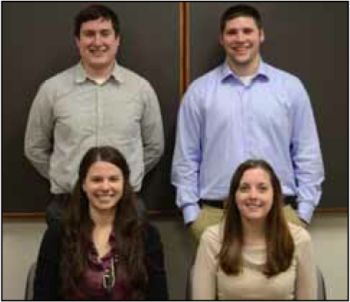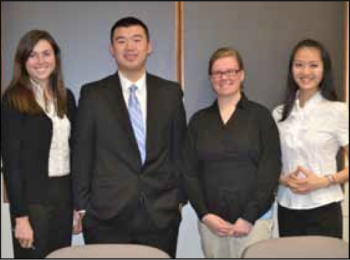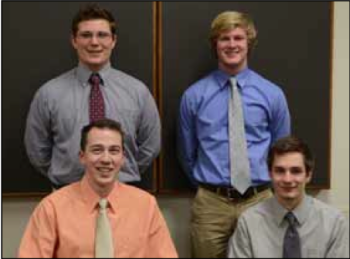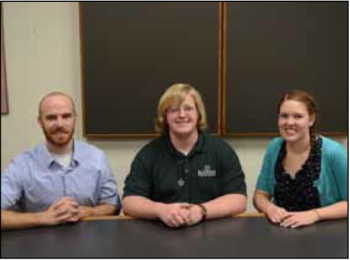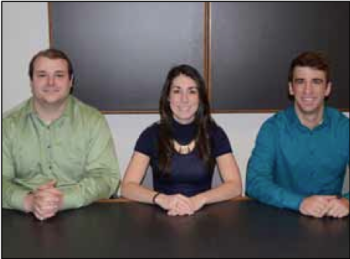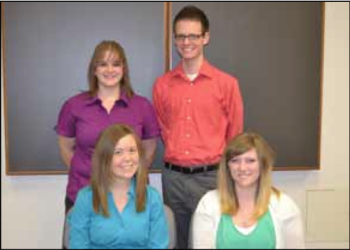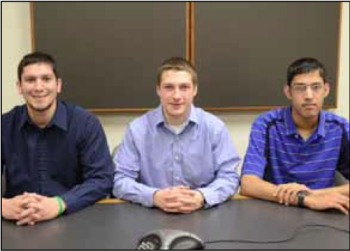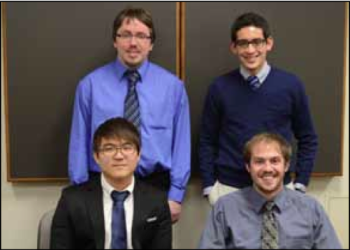Biosystems
Projects
Biosystems Engineering student teams, enrolled in the two-semester biosystems design capstone experience, BE 485/487, develop, evaluate, and select design alternatives in order to solve real-world problems. Projects are diverse, but each reflects systems thinking by integrating interconnected issues affecting the problem, including critical biological constraints. The engineering design process is documented in a detailed technical report. Teams present project designs to engineering faculty and a review panel of professional engineers for evaluation. Each BE 485/487 Capstone design team prepares and presents a design solution in report, poster and oral formats to an industry advisory board, faculty, peers and the public that:
- Requires engineering design
- Uses a holistic approach
- Combines biology and engineering
- Interprets data
- Solves a real problem
- Evaluates economic feasibility
For information on sponsoring a project, please contact Dr. Dana Kirk or Dr. Luke Reese.
Redesign of ProMix Batter Mixer Cooling Mechanisms
Regulations from the FDA require a batter mix added to food to be at 50°F or below in order to comply with food safety. JBT Foodtech is setting a more stringent temperature reduction to 45°F.
The objective of this project is to redesign the batter coolant system on the ProMix continuous batter mixer in order to reduce the temperature of the mix 10°F in 20 minutes and then maintain a temperature between 40 and 45°F in order to ensure compliance with FDA/USDA regulations.
Emission Mitigation From Confined Animal Feeding Operations (CAFO) Using Wet Scrubbers And An Algae Culture
Animal feeding operations emit large quantities of ammonia gas and particulate matter. These emissions affect the health of workers and residents in the surrounding area. Without emission mitigation animal feeding operations will not be able to continue to expand with growing demand for meat and dairy products.
To design an integrated wet scrubber system which will shower ventilation exhaust air and absorb the ammonia and particulate matter. The effluent water will be used in an algal cultivation greenhouse system to recycle the water, while developing value-added products from the algae, such as fertilizer.
Torrefaction Process Improvement
Typical torrefaction product yields are approximately 70%; however, HTI experiences a low product yield of 30% for their torrefaction process. Large particle size distribution and large variance in the shape of wood chips make it difficult to ensure complete biomass torrefaction.
Green Coal Inc. will design a method to increase the product yield of HTI’s torrefaction process while consistently and completely torrefying biomass of varying size and shape.
Chestnut Chip Dehydration System Design
Chestnut chips are a value-added product that can be used as an ingredient, eaten as a snack, or milled into flour. In order to realize the market potential of
chestnut chips, chip drying techniques must be investigated and optimized to make the production of chestnut chips economical.
By determining the theoretical drying parameters, investigating alternative systems, and performing economic analyses, the optimal dehydration system for chestnut chips can be determined. A tool must be developed that determines the optimal dehydration system parameters.
Water Quality Best Management Practices Design for a City of Lansing Re-Development Project
Urban landscapes have a high percentage of impervious areas increasing stormwater runoff times and peak flow conditions. Using best management practices from the Michigan Low Impact Development (LID) Manual, runoff can be managed to reduce the quantity and improve the quality of the stormwater.
To design an efficient stormwater runoff treatment system for the redevelopment of a parking lot in downtown Lansing in compliance with Michigan LID techniques.
Integration of Aquaculture, Anaerobic Digestion, and Hydroponic Systems
Currently, aquaculture is expensive and has a long payback period after an initial capital investment. Incorporating aquaculture with anaerobic digestion and hydroponics adds an additional source of revenue to the system along with the reduction of operational costs through the combustion of gas produced from an anaerobic digester.
Optimize an anaerobic digestion system using fish carcass and wastewater from an existing aquaculture facility, with the products from the anaerobic digester used as fertilizer and an energy source to maximize yield in a hydroponic system.
Hydroponic Processing Optimization for Mung Bean Sprouts
Mung beans are grown hydroponically from seed to sprout in 5.5 days where they are used in La Choy products by ConAgra. The process has not been modified in over four decades and observable losses in yield and sprout quality are evident.
The goal of this project is to increase profit by optimizing the hydroponic system and reducing a 3% loss of quantity due to hard bean germination and a 10% loss due to water shortages. Multiple production processes are being investigated including pH imbalance which causes browning, lowering the quality of their product.
Dried Red Spots Optimization for DNA Extraction
The Dried Blood Spot (DBS) technique is an effective way to screen for diseases and genetic disorders for patients who do not have much blood to give, access to veins to draw blood such as infants and the elderly, and also for those who live in low resource areas.
Improvement of the method can make blood testing more efficient and much more cost effective. The project goal is to increase the yield of DNA that can be extracted from a DBS sample in the most cost effective and time-efficient manner.
Optimization and Modeling of a Plastic Bottle Rinser
The bottle rinser is the last step in decontamination before the product is hot-filled into the containers. When the bottle rinser operates optimally, the risk of public safety or fiscal loss due to microbial or foreign material contamination is significantly reduced.
Design a process to reduce microbial contamination and reduce foreign materials in the packaging bottles before the bottles reach the hot-fill beverage lines at the Ocean Spray® juice factory.
Electrocoagulation-Flotation Treatment System for Anaerobic Digestion Effluent
Conventional chemical and physical treatments of agricultural, municipal and industrial residual waste streams do not provide an efficient solution with a small footprint and limited chemical utilization. This presents the need for a cost-effective, high strength water treatment and reclamation system.
The goal of this project is to investigate the effectiveness of coupling dissolved air flotation and electrocoagulation-flotation technologies in treating liquid AD effluent to improve upon the efficiency of the processes when utilized independently and to recover nutrients.
